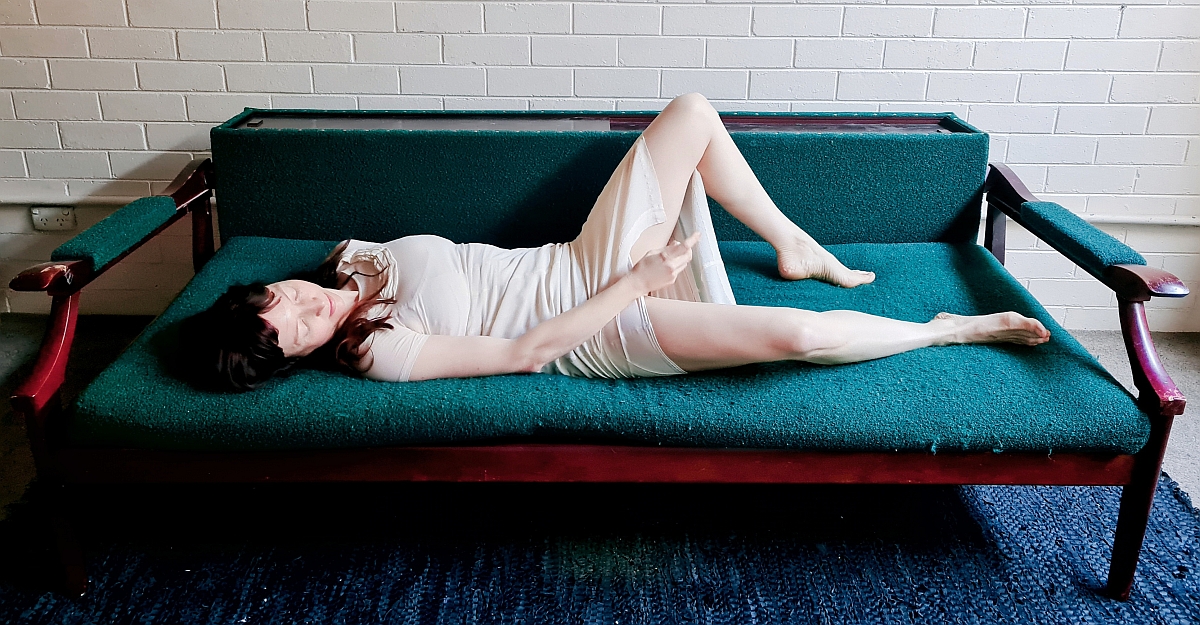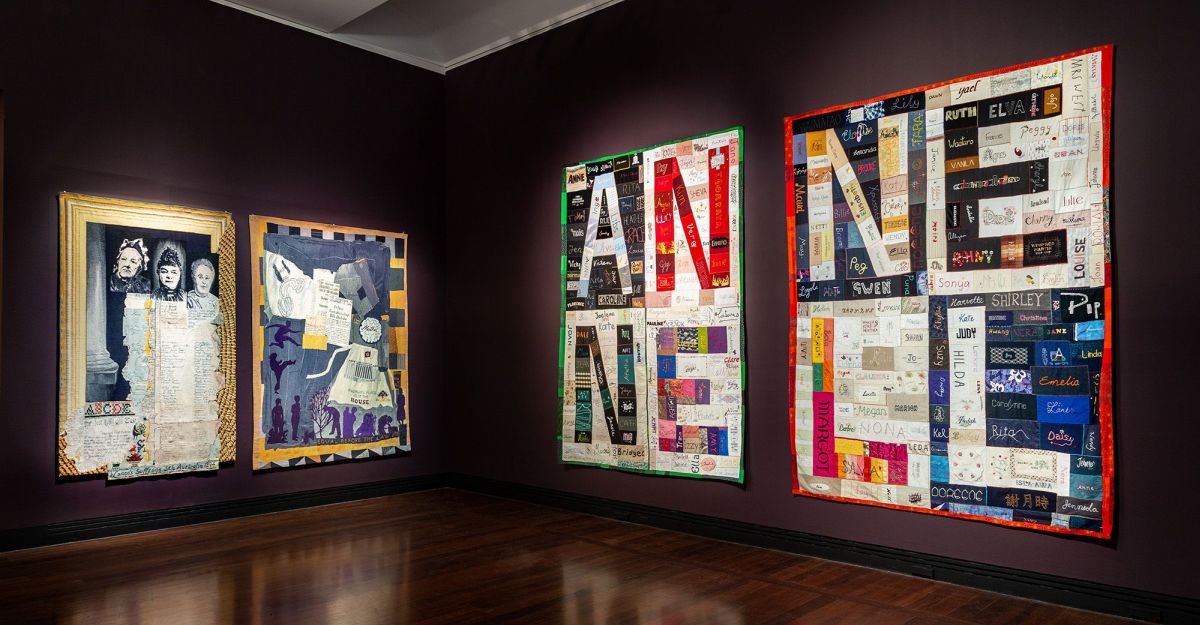It is now three years since I initiated discrimination proceedings at the Human Rights Commission against Creative Australia after the ‘official arts funding body of the Government of Australia’ jettisoned my solo artwork, IMMACULATE, citing ‘incalculable risk’.
IMMACULATE was a live artwork documenting my ongoing process of trying to conceive via self-insemination and was, in real terms, remarkably low-risk. It was a meditation on time, infertility, and the shrouds that suffocate solo and queer reproduction. I was unveiling a part of my lived experience and not, as Creative Australia has now acknowledged, ‘bringing new life into the world as an art project’. I was the sole artist, recording my body and life from the safety of my lounge room. There was no chance I’d tumble from a highwire or that a piano would fall on my head.
In any case, Creative Australia weren’t concerned about risk to me. In their extraordinary 12-point apology, they admit they knew throughout the months-long process of restricting and denigrating my work and life that their actions caused me considerable distress but carried on regardless.
I am not privy to all Creative Australia’s deliberations. Partly because in the lead up to Federal Court they first failed to give an adequate discovery, then claimed that they had lost documents which I believe contained key evidence, and finally, said they’d destroyed them. Perhaps of most concern to them was a perceived existential risk after Peta Credlin lambasted both them and my work on Sky News. A Senior Executive said to me portentously of then Prime Minister, Scott Morrison, ‘You do know we have a very religious PM, don’t you?’ A Director at The Art Centre Melbourne, which had also selected me to produce work based on IMMACULATE as a proposal, took the same line. She told me they were concerned negative media would cause the Government to defund The Art Centre and didn’t know if she would “have a job next year.” IMMACULATE was then scuttled from their program plans. She still has her very comfortable job.
Inconveniently for Creative Australia, they did not at the time have written into policy that artists must make work pleasing to right-wing commentators or religious prime ministers. As they now concede, there was nothing illegal in my work or actions, which on the contrary demonstrated ‘the utmost ethical integrity.’ Having failed to find legal grounds to break my contract, they broke it anyway, summoning the protection of an emotionally charged bogey to shield themselves.
It is illegal in Australia to discriminate against someone based on their potential to become pregnant, marital status, sex or sexual orientation. Nonetheless, Creative Australia CEO, Adrian Collette, in his letter rescinding support, spoke of concern for ‘possible current and longer-term consequences for the child.’ Given the artwork featured a lone adult you might ask — and I did — who was the ‘current child’? Was it the sperm? Applying personhood to gametes is dystopian stuff. Even the most conservative red states of the US don’t attempt to bestow personhood pre-embryo.
All robust peer reviewed scientific studies, (such as those by Susan Golombok, the leader in the field, or the National Lesbian Longitudinal Family Study) show that people conceived via donor conception thrive, as do their families. As Dr Ruth McNair stated in her 2004 paper to the Victorian Law Commission, ‘Outcomes for Children Born of A.R.T. in a Diverse Range of Families’,
[t]here is sound evidence of equal or more positive outcomes for children born into families with non-biological parents, same-sex parents and through surrogate arrangements.’
Imputations that children are harmed by being raised by solo, queer, or non-biological parents are categorically untrue.
Despite this evidence, the ‘damaged child’ (originally the protest image of choice for anti-abortion activists) is increasingly used by a variety of alt-right groups attempting to restrict queer lives and expression. Its ghoulish spectre was raised for the recent Million March for Children in Canada, which warned of the ‘indoctrination and sexualisation’ of children, and again by groups such as the Proud Boys, White Lives Matter and the Australian Christian Lobby, protesting Drag Queen Story Time in the US and Australia.
A small loose-knit group with similar tactics and links to ultra-conservative interests set up a letter-writing campaign, lobbying my funders and flooding my social media. Presenting themselves as the voice of ‘Donor Conceived People’, they created a petition calling IMMACULATE a ‘vain, narcissistic stunt’, and claiming queer, solo and infertile people who access donors are motivated by an ‘entitled mentality that they deserve a child as a backwards extension of themselves and status symbol.’
Journalist and filmmaker Sarah Dingle was amongst those who wrote to protest my funding in this vein. In a letter to another organisation, in which she said she had written to Creative Australia, she appeared to bestow personhood to gametes, claiming repeatedly that my (solo) work ‘damages’ and ‘exploits the child.’ She said IMMACULATE may ‘break a number of state and federal laws,’ giving reasons including that the sperm I used may not have been frozen and ‘quarantined.’ If an adult allowing sperm which hasn’t been frozen and quarantined into their body is committing an ‘unethical, damaging and potentially illegal act’, it’s grave news for the millions of hetero couples across Australia planning to get jiggy tonight. Though it seems only queers, solo women and the infertile are of concern to Dingle’s group. She went on to cite numerous officious-sounding regulations and regulatory bodies, some of which were later echoed by Creative Australia in their communications with me and none of which were applicable to my actions.
Though the organisation has recently rebranded itself, the same executives who led the charge against me remain at the helm of Creative Australia. After torpedoing my work, they introduced an ‘Audit and Risk Committee’ whose tasks include managing what the organisation deems to be its ‘highest risks, including those associated with individual projects.’
After experiencing firsthand what it means to create work deemed by Creative Australia to have ‘incalculable risk’, I hope that questions will be asked of the organisation about how exactly individual projects will be identified and labelled as coming with ‘risk’, and what the ramifications for those artworks will be. Blacklisting artists based on the risk that their work will upset homophobic internet trolls or ultra conservative media would do nothing but entrench discrimination.
In 2020, Collette rounded out his letter rescinding support for IMMACULATE by saying,
Beyond any legal issues that might arise, the ethical issues that will inevitably surround this project, possibly for years to come, are not something [Creative Australia] can take responsibility for.
Tensions around artistic censorship and institutionally defined ‘ethics’ are currently on the rise. By taking the extraordinary measure of breaking their contract and making my art, my body and my lived experience as a queer solo person the site of their political action, Creative Australia have inadvertently highlighted the real ‘ethical issues’ at stake. As Collette predicted, these issues have already surrounded my project for years.
The terms of the settlement include the obligation for the Creative Australia Board and Executive to undergo in-person training about gender equity, rainbow families, LGBTIQA+ people and reproductive rights, as well as the issuing of a comprehensive public apology giving insight into the extent of their misconduct. Though initially adamant that they didn’t want to take responsibility for ethical issues, with the release of this apology, Creative Australia have been compelled to do just that.
Photo: Performance image from IMMACULATE (Casey Jenkins Sh). Reproduced with permission.



